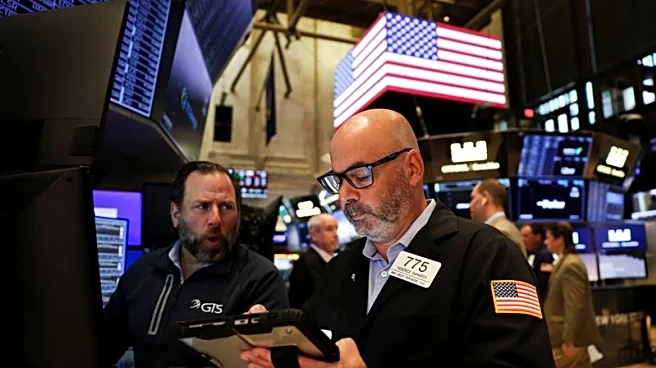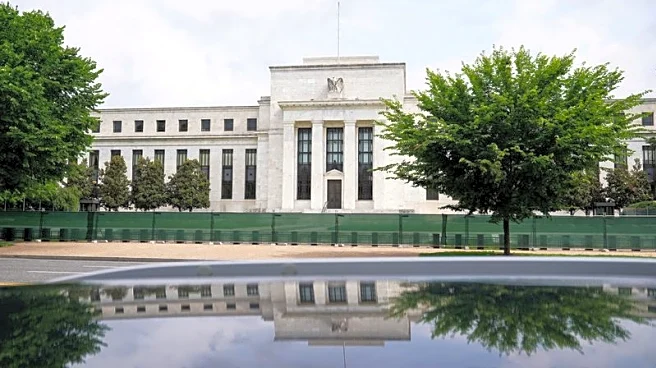What's Happening?
Gold prices have reached a record high, driven by expectations of further U.S. interest rate cuts. Investors are closely monitoring Federal Reserve Chair Jerome Powell's upcoming speech for indications of future monetary policy. The recent rate cut by the Federal Reserve, which reduced rates by 25 basis points, has fueled speculation of additional cuts in the coming months. New Federal Reserve Governor Stephen Miran has advocated for aggressive rate cuts, arguing that the current monetary policy is too tight and could jeopardize the job market. However, other Fed officials have expressed caution, emphasizing the need to manage inflation carefully. The CME FedWatch tool indicates a high probability of further rate cuts in October and December.
Why It's Important?
The anticipation of further rate cuts has significant implications for the U.S. economy and global markets. Lower interest rates typically lead to a weaker dollar, making gold more attractive as a safe-haven asset. This trend is reflected in the rising demand for gold, particularly from institutional investors and markets like India. The potential for aggressive rate cuts could stimulate economic activity but also poses risks of inflationary pressures. The differing views within the Federal Reserve highlight the ongoing debate over balancing economic growth with inflation control. The outcome of these policy decisions will impact various sectors, including commodities, equities, and foreign exchange markets.
What's Next?
Investors are awaiting Federal Reserve Chair Jerome Powell's speech for further clarity on the central bank's policy direction. The market is pricing in additional rate cuts, with expectations of a 25-basis-point reduction in October and another in December. The Federal Reserve's approach to managing inflation and supporting employment will be crucial in shaping economic conditions. Stakeholders, including businesses and policymakers, will need to adapt to potential changes in interest rates and their effects on investment and consumer spending.












